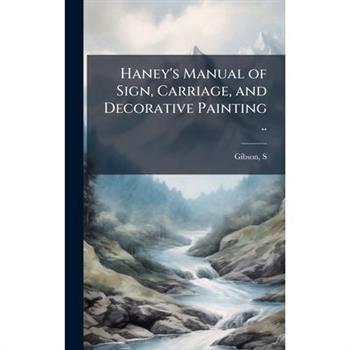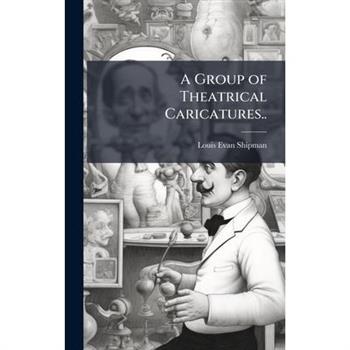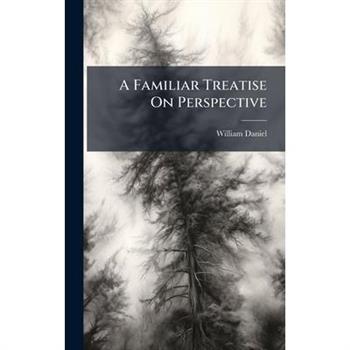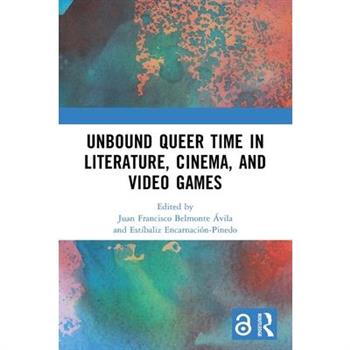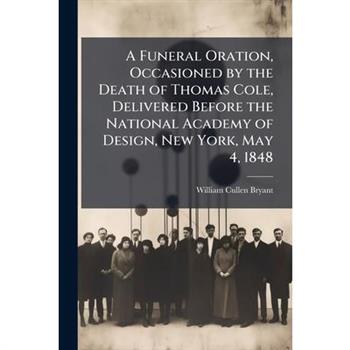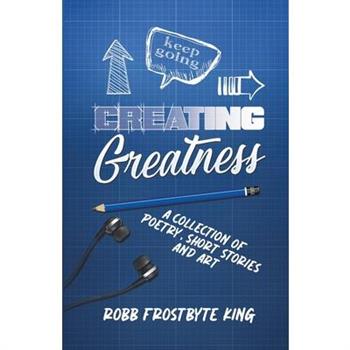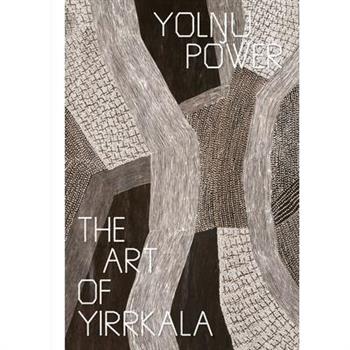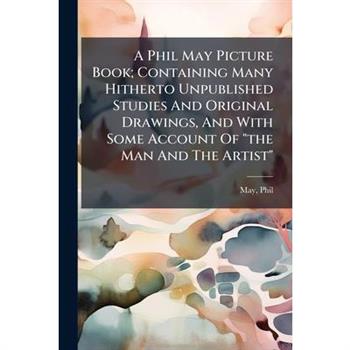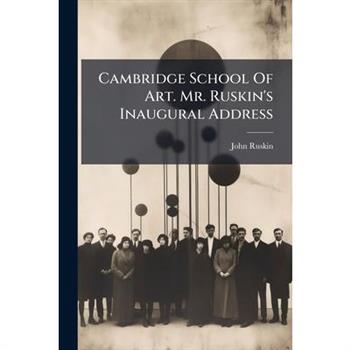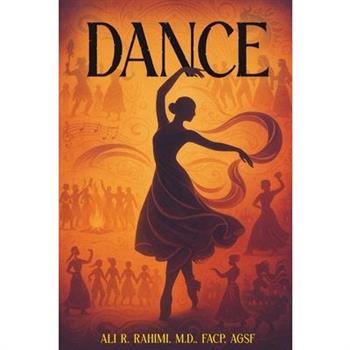At The Risk of Being Seen - The Art of Max Zolo
At the Risk of Being Seen - The Art of Max Zolo invites you into a bold and intimate conversation between artist and reader, blending more than 40 original artworks with prose and poetry in a rare collaboration between mother and son.Through image and word, Zolo challenges societal norms and offers deeply personal insights-filtered through the lens of an empath and a creative artist living with cerebral palsy and neurodivergence. His work transforms vulnerability into strength, urging us to embrace what is true: imperfection.Each piece tells its own story-together forming a moving tribute to our shared humanity and the boundless power of imagination. With fearless honesty, Max Zolo explores themes of self-identity, the bond between mother and child, family, the resilience and fragility of life, the urgency of Black lives, and the art of survival.Each story, best savored one at a time, becomes a study in generosity and eloquence as the images, words, and emotions settle in. Do not rush your appreciation of this book. Take the journey at your own pace. As a partner in the experience, give yourself the time and grace your own reflections deserve.Having risked-and been seen-Max Zolo sees us. We are all here for each other. Wabi-sabi. Takiwatanga. Ubuntu.
Star Trek III: The Search for Spock the Making of the Classic Film
An in-depth look at the making of Star Trek III: The Search for Spock, featuring rare and previously unseen production art and new and exclusive interviews. Over 40 years ago, in Star Trek III: The Search for Spock, Admiral Kirk and his crew embarked on a perilous mission to retrieve Spock's body and reunite his soul with his physical form, defying Starfleet orders and facing off against Klingon enemies to save their friend. Star Trek III: The Search for Spock - The Making of the Classic Film delves into the untold stories behind the making of one of the most pivotal films in the Star Trek saga. From the pressures of continuing the iconic story after The Wrath of Khan to Leonard Nimoy stepping into the director's chair, this book explores the creative challenges, technical innovations, and behind-the-scenes drama that shaped the film. Featuring interviews with cast, crew, and production staff, it uncovers the intricate world-building, the special effects that brought Klingon battles and Genesis Planet to life, and the emotional weight of Spock's resurrection. Featuring a foreword from Robin Curtis, Star Trek III: The Search for Spock - The Making of the Classic Film is a must-read for Trek fans and film enthusiasts alike, celebrating the legacy of a film that solidified the franchise's place in pop culture history.
Exploring Doctor Who Fandom Through Screenwriting Practice-As-Research
Exploring Doctor Who Fandom Through Screenwriting Practice-As-Research: Otherness, Intersectionality and Fan Studies explores the diversity of fans and how they form and express their identity within fandom. Main themes in this book include otherness, fans with disabilities, fans within the LGBTQIA] community, and how fandom can enrich the life of a fan.This book asks readers how a fan develops and performs their identity and proposes a screenwriting practice methodology. Otherness in this scenario includes people who have disabilities are within the LGBTQIA+ spectrum and are neurodiverse. Screenwriting methodology also allows concepts such as disability, sexuality, and otherness to be humanized through characterization and world building as seen in screenwriting practice.Exploring Doctor Who Fandom Through Screenwriting Practice-As-Research: Otherness, Intersectionality and Fan Studies examines world building, characterization, and story arcs that explore the development of fan identity and how otherness through fandom is expressed. It draws on the lived experience of the author as a disabled LGBTQIA+ aca-fan to add a layer of authenticity to the research. By offering a unique perspective on fandom and identity and how screenwriting methodology is a viable approach to researching these concepts, it looks to spread understanding of a neglected point of view and enhance future works.Readers who would be interested in this book are scholars and students of fandom theory, screenwriting practice, and those interested in the development and expression of identity as a fan.
The Forms of Silence [ street photography ]
The Forms of Silence: Street Photography began many years ago with a simple but life-changing piece of advice from three dear friends-Tim, Shaba, and Paul-all experienced artists, publishers, and photographers. They saw something in me I hadn't yet recognized: that I had "the eye" for photography. Their encouragement led me to pick up a small camera and wander the streets, capturing fragments of life and experimenting with the way light and shadow converse. This journey, now approaching a decade, has been sustained by the unwavering support of those closest to me-my parents, siblings, my wife, my children, and friends like Johannes and Dave of the CEC family, who have walked beside me through every stage. Their belief in me, through seasons of uncertainty and wonder alike, has been a quiet but constant anchor.As a sociologist and theologian, my professional life is rooted in listening to the struggles and hopes of marginalized communities-work that often brings me to the edges of human vulnerability and resilience. Amid this intensity, I found myself longing for silence. Street and urban photography became that silence: a way to stand still, to breathe, and to find beauty in the overlooked corners of the everyday. I have always been drawn to the quiet transformations of the city - the way rain turns streets into living paintings, or how fallen leaves scatter like the soft kisses of Mother Nature upon the earth. These are the gestures that remind me there is poetry hidden everywhere, waiting patiently to be noticed.I don't see this book-or my work-as a masterpiece, for there are true masters of photography from whom I still have much to learn. Rather, I see it as a trace of my search-a personal record of listening for stillness in a world that rarely stops shouting.Sam Lee
American Modernism from the Charles Butt Collection
Featuring touchstones of modernist art and showcasing many never-before-published works by American icons.American Modernism from the Charles Butt Collection recontextualizes touchstones of American art and showcases never-before-published works by Stuart Davis, Arthur Dove, Marsden Hartley, Edward Hopper, Joan Mitchell, Alice Neel, Georgia O'Keeffe, and Alma Thomas, among others. For the first time, Charles Butt--CEO of the H-E-B supermarket chain--shares his passion for modernist art in an exhibition that will travel across Texas from 2025 through 2027 and in this accompanying catalogue. The more than eighty paintings and watercolors from the first eighty years of the twentieth century reveal an influential Texan's personal vision of the creativity of modern American art. The collection includes both intimate figural scenes and dynamic landscape paintings, and illuminates various approaches to representing and interpreting this country's land and seas. With color plates and essays by curator Shirley Reece-Hughes and art historian Erika Doss, as well as an interview with Butt by the Carter's director, Andrew J. Walker, American Modernism from the Charles Butt Collection offers a rare glimpse of an unparalleled collection of American imagination.
Animalia
A collection of classic animal illustrations by renowned artists and naturalists. Celebrate the wonder of wildlife with hidden gems from the Royal Collection. Animalia includes eighty detailed and lifelike illustrations of animal life from around the world. Discover the work of some of the greatest artists and naturalists in history, including John James Audubon, Mark Catesby, John Gould, and Maria Sibylla Merian. Originally created as essential studies of the natural world, these vivid and graphic works of art are presented here alongside a concise expert introduction. This book is the perfect gift for anyone inspired by the beauty of nature.
Botanicals
A collection of gorgeous plant illustrations by famous artists and botanists. Admire the beauty of botany with this book of exquisite illustrations from the Royal Collection. A source of inspiration for those with a love of plant life, illustration, and design, Botanicals includes more than eighty meticulous and scientifically accurate drawings by renowned artists and botanists, including Alexander Marshal, Maria Sibylla Merian, and Mark Catesby. Originally created as essential studies of the natural world, these vivid and graphic works of art are presented here alongside a concise expert introduction. This book is the perfect gift for plant lovers.
The Artist's Vade Mecum
"The Artist's Vade Mecum," originally published in 1762, offers a comprehensive guide to the art of drawing. This elegantly engraved work, featuring one hundred folio copper plates, presents a wide array of examples across various artistic disciplines. Aspiring artists will find detailed instruction on rendering facial features, heads, hands, feet, and other essential elements of the human form. The book serves as an invaluable resource for understanding the techniques and styles prevalent during the 18th century. Robert Sayer's work provides not only practical guidance but also a historical perspective on artistic education, making it a treasured addition to any artist's library and a fascinating glimpse into the artistic practices of the past. Discover the enduring principles of drawing through this meticulously crafted and historically significant volume.This work has been selected by scholars as being culturally important, and is part of the knowledge base of civilization as we know it. This work was reproduced from the original artifact, and remains as true to the original work as possible. Therefore, you will see the original copyright references, library stamps (as most of these works have been housed in our most important libraries around the world), and other notations in the work.This work is in the public domain in the United States of America, and possibly other nations. Within the United States, you may freely copy and distribute this work, as no entity (individual or corporate) has a copyright on the body of the work.As a reproduction of a historical artifact, this work may contain missing or blurred pages, poor pictures, errant marks, etc. Scholars believe, and we concur, that this work is important enough to be preserved, reproduced, and made generally available to the public. We appreciate your support of the preservation process, and thank you for being an important part of keeping this knowledge alive and relevant.
A Funeral Oration, Occasioned by the Death of Thomas Cole, Delivered Before the National Academy of Design, New York, May 4, 1848
This is a commemorative funeral oration delivered by William Cullen Bryant on the occasion of the death of Thomas Cole, a pivotal figure in American art history. Presented before the National Academy of Design in New York on May 4, 1848, Bryant's speech celebrates Cole's life, artistic achievements, and profound influence on the American art scene. Cole, best known as the founder of the Hudson River School, revolutionized landscape painting in the United States. Bryant eloquently captures Cole's dedication to nature and his ability to translate its beauty onto canvas. The oration provides valuable insights into the artistic and cultural context of 19th-century America, highlighting the importance of Cole's work in shaping a national artistic identity. This historical document offers a glimpse into the life and legacy of a celebrated artist, making it essential reading for art historians, students, and anyone interested in American art and culture. "A Funeral Oration, Occasioned by the Death of Thomas Cole" remains a testament to Cole's enduring impact and a tribute to the power of art.This work has been selected by scholars as being culturally important, and is part of the knowledge base of civilization as we know it. This work was reproduced from the original artifact, and remains as true to the original work as possible. Therefore, you will see the original copyright references, library stamps (as most of these works have been housed in our most important libraries around the world), and other notations in the work.This work is in the public domain in the United States of America, and possibly other nations. Within the United States, you may freely copy and distribute this work, as no entity (individual or corporate) has a copyright on the body of the work.As a reproduction of a historical artifact, this work may contain missing or blurred pages, poor pictures, errant marks, etc. Scholars believe, and we concur, that this work is important enough to be preserved, reproduced, and made generally available to the public. We appreciate your support of the preservation process, and thank you for being an important part of keeping this knowledge alive and relevant.
Le Cyclop: A Monumental Folly by Tinguely, Saint Phalle, and Their Artist Friends
A total environment-cum-woodland utopia created by an all-star team of "mad sculptors" led by Jean TinguelyCreated by sculptor Jean Tinguely (1925-91) in collaboration with Niki de Saint Phalle (1930-2002) and their artist friends Bernhard Luginb羹hl, Larry Rivers, Jes繳s Rafael Soto and Daniel Spoerri, among others, Le Cyclop is a monumental sculptural work that dominates the forest of Milly-la-For礙t outside Paris. Elaborated upon for three decades, the collective project generated a total environment. Its exterior presents an immense head bedecked in sparkling mirrors, built almost entirely from found and industrial materials. Its interior houses a surprising universe punctuated with sound sculptures, a small automatic theater, machinery with scrap metal gears as well as homages to Duchamp, Klein and Schwitters.This definitive publication tells in detail the story of Le Cyclop, gathering new essays by an array of international art historians and scholars, an extensive chronology as well as remarkable archival materials.
Illustrated Catalogue No. 10 Of Etchings And Engravings
A meticulously detailed and beautifully presented catalogue from Frederick Keppel & Co, "Illustrated Catalogue No. 10 Of Etchings And Engravings" offers a window into the world of fine art prints. This historical record showcases a selection of etchings and engravings available at the time of publication, reflecting the artistic tastes and popular subjects of the era. Art enthusiasts, collectors, and historians will find this catalogue to be an invaluable resource for understanding the market and appreciation of these art forms. Explore the artistry and craftsmanship captured within these pages, providing insight into the techniques and styles employed by various artists. This catalogue not only serves as a historical document but also as a testament to the enduring appeal of etchings and engravings as significant contributions to the world of art.This work has been selected by scholars as being culturally important, and is part of the knowledge base of civilization as we know it. This work was reproduced from the original artifact, and remains as true to the original work as possible. Therefore, you will see the original copyright references, library stamps (as most of these works have been housed in our most important libraries around the world), and other notations in the work.This work is in the public domain in the United States of America, and possibly other nations. Within the United States, you may freely copy and distribute this work, as no entity (individual or corporate) has a copyright on the body of the work.As a reproduction of a historical artifact, this work may contain missing or blurred pages, poor pictures, errant marks, etc. Scholars believe, and we concur, that this work is important enough to be preserved, reproduced, and made generally available to the public. We appreciate your support of the preservation process, and thank you for being an important part of keeping this knowledge alive and relevant.
Prodromus Iconicus Sculptilium Gemmarum ... De Musaeo Antonii Capello
"Prodromus Iconicus Sculptilium Gemmarum ... De Musaeo Antonii Capello" offers a fascinating glimpse into the esteemed collection of Antonio Capello. This volume serves as an iconic representation of sculpted gems, showcasing the artistry and historical significance of each piece. Detailing the contents of Capello's museum, this work provides invaluable insights into the world of antique jewelry and sculpture. A must-read for collectors, historians, and art enthusiasts alike, it captures a moment in time, preserving the legacy of Capello's remarkable assemblage of rare and beautiful objects.This work has been selected by scholars as being culturally important, and is part of the knowledge base of civilization as we know it. This work was reproduced from the original artifact, and remains as true to the original work as possible. Therefore, you will see the original copyright references, library stamps (as most of these works have been housed in our most important libraries around the world), and other notations in the work.This work is in the public domain in the United States of America, and possibly other nations. Within the United States, you may freely copy and distribute this work, as no entity (individual or corporate) has a copyright on the body of the work.As a reproduction of a historical artifact, this work may contain missing or blurred pages, poor pictures, errant marks, etc. Scholars believe, and we concur, that this work is important enough to be preserved, reproduced, and made generally available to the public. We appreciate your support of the preservation process, and thank you for being an important part of keeping this knowledge alive and relevant.
Ilam Anastatic Drawing Society [Archaeological and Antiquarian Papers, Ed. by G.R. Mackarness and W.F. Francis]
Explore a fascinating collection of archaeological and antiquarian papers from the Ilam Anastatic Drawing Society. This volume, edited by G.R. Mackarness and W.F. Francis, showcases the society's dedication to documenting historical artifacts and sites through detailed drawings. Delve into the meticulous work of the society members as they capture the essence of bygone eras. "Ilam Anastatic Drawing Society" offers a unique glimpse into the past, appealing to art enthusiasts, historians, and anyone intrigued by the intersection of art and archaeology. Discover the value of preserving history through the art of drawing.This work has been selected by scholars as being culturally important, and is part of the knowledge base of civilization as we know it. This work was reproduced from the original artifact, and remains as true to the original work as possible. Therefore, you will see the original copyright references, library stamps (as most of these works have been housed in our most important libraries around the world), and other notations in the work.This work is in the public domain in the United States of America, and possibly other nations. Within the United States, you may freely copy and distribute this work, as no entity (individual or corporate) has a copyright on the body of the work.As a reproduction of a historical artifact, this work may contain missing or blurred pages, poor pictures, errant marks, etc. Scholars believe, and we concur, that this work is important enough to be preserved, reproduced, and made generally available to the public. We appreciate your support of the preservation process, and thank you for being an important part of keeping this knowledge alive and relevant.
Haney's Manual of Sign, Carriage, and Decorative Painting ..
"Haney's Manual of Sign, Carriage, and Decorative Painting" is a comprehensive guide to the techniques and practices of decorative painting as they were understood in the late 19th century. This manual provides detailed instructions and illustrations for sign painters, carriage decorators, and anyone interested in the art of adding decorative elements to various surfaces. From basic brushstrokes to elaborate designs, the book covers a wide range of topics, offering practical advice and insights into the materials, tools, and methods used in the trade.Originally published in 1870, this book offers a glimpse into the artistic and commercial landscape of the time. It is a valuable resource for historians, artists, and craftspeople interested in preserving and understanding traditional painting techniques.This work has been selected by scholars as being culturally important, and is part of the knowledge base of civilization as we know it. This work was reproduced from the original artifact, and remains as true to the original work as possible. Therefore, you will see the original copyright references, library stamps (as most of these works have been housed in our most important libraries around the world), and other notations in the work.This work is in the public domain in the United States of America, and possibly other nations. Within the United States, you may freely copy and distribute this work, as no entity (individual or corporate) has a copyright on the body of the work.As a reproduction of a historical artifact, this work may contain missing or blurred pages, poor pictures, errant marks, etc. Scholars believe, and we concur, that this work is important enough to be preserved, reproduced, and made generally available to the public. We appreciate your support of the preservation process, and thank you for being an important part of keeping this knowledge alive and relevant.
A Group of Theatrical Caricatures..
"A Group of Theatrical Caricatures" offers a glimpse into the vibrant world of late 19th-century British theatre through the art of caricature. Penned by Louis Evan Shipman, this collection captures the essence of theatrical personalities and productions with wit and artistic flair. Each caricature provides a unique perspective on the actors, playwrights, and performances that defined the era. These artistic renderings serve not only as amusing portraits but also as historical documents, reflecting the cultural trends and social attitudes of the time. Readers interested in theatre history, caricature art, or British cultural history will find this collection both entertaining and insightful.This work has been selected by scholars as being culturally important, and is part of the knowledge base of civilization as we know it. This work was reproduced from the original artifact, and remains as true to the original work as possible. Therefore, you will see the original copyright references, library stamps (as most of these works have been housed in our most important libraries around the world), and other notations in the work.This work is in the public domain in the United States of America, and possibly other nations. Within the United States, you may freely copy and distribute this work, as no entity (individual or corporate) has a copyright on the body of the work.As a reproduction of a historical artifact, this work may contain missing or blurred pages, poor pictures, errant marks, etc. Scholars believe, and we concur, that this work is important enough to be preserved, reproduced, and made generally available to the public. We appreciate your support of the preservation process, and thank you for being an important part of keeping this knowledge alive and relevant.
A Familiar Treatise On Perspective
A Familiar Treatise On Perspective, subtitled 'Designed For Ladies, And Those Who Are Unacquainted With The Principles Of Optics And Geometry, ' offers an accessible introduction to the art of perspective drawing. Authored by William Daniel, this treatise simplifies complex concepts, making them understandable for beginners and those without a background in optics or geometry. This book guides the reader through the fundamental principles of creating realistic and visually appealing drawings. Focusing on clarity and ease of use, "A Familiar Treatise On Perspective" serves as an invaluable resource for anyone looking to learn the basics of perspective drawing, regardless of their prior experience. Whether you are an aspiring artist, a student of architecture, or simply interested in enhancing your drawing skills, this book provides a solid foundation in the essential techniques.This work has been selected by scholars as being culturally important, and is part of the knowledge base of civilization as we know it. This work was reproduced from the original artifact, and remains as true to the original work as possible. Therefore, you will see the original copyright references, library stamps (as most of these works have been housed in our most important libraries around the world), and other notations in the work.This work is in the public domain in the United States of America, and possibly other nations. Within the United States, you may freely copy and distribute this work, as no entity (individual or corporate) has a copyright on the body of the work.As a reproduction of a historical artifact, this work may contain missing or blurred pages, poor pictures, errant marks, etc. Scholars believe, and we concur, that this work is important enough to be preserved, reproduced, and made generally available to the public. We appreciate your support of the preservation process, and thank you for being an important part of keeping this knowledge alive and relevant.
J羹rgen Partenheimer. Die Entfernung Im Stand Luftw瓣rts
Unbound Queer Time in Literature, Cinema, and Video Games
Unbound Queer Time in Literature, Cinema, and Video Games investigates the potential of queer conceptions of time to unbind forms of understanding identities, and will be of interest to postgraduate students and researchers working in areas such as Gender Studies, Media Studies, Literature, Game Studies, and Art History.
A Funeral Oration, Occasioned by the Death of Thomas Cole, Delivered Before the National Academy of Design, New York, May 4, 1848
This is a commemorative funeral oration delivered by William Cullen Bryant on the occasion of the death of Thomas Cole, a pivotal figure in American art history. Presented before the National Academy of Design in New York on May 4, 1848, Bryant's speech celebrates Cole's life, artistic achievements, and profound influence on the American art scene. Cole, best known as the founder of the Hudson River School, revolutionized landscape painting in the United States. Bryant eloquently captures Cole's dedication to nature and his ability to translate its beauty onto canvas. The oration provides valuable insights into the artistic and cultural context of 19th-century America, highlighting the importance of Cole's work in shaping a national artistic identity. This historical document offers a glimpse into the life and legacy of a celebrated artist, making it essential reading for art historians, students, and anyone interested in American art and culture. "A Funeral Oration, Occasioned by the Death of Thomas Cole" remains a testament to Cole's enduring impact and a tribute to the power of art.This work has been selected by scholars as being culturally important, and is part of the knowledge base of civilization as we know it. This work was reproduced from the original artifact, and remains as true to the original work as possible. Therefore, you will see the original copyright references, library stamps (as most of these works have been housed in our most important libraries around the world), and other notations in the work.This work is in the public domain in the United States of America, and possibly other nations. Within the United States, you may freely copy and distribute this work, as no entity (individual or corporate) has a copyright on the body of the work.As a reproduction of a historical artifact, this work may contain missing or blurred pages, poor pictures, errant marks, etc. Scholars believe, and we concur, that this work is important enough to be preserved, reproduced, and made generally available to the public. We appreciate your support of the preservation process, and thank you for being an important part of keeping this knowledge alive and relevant.
Creating Greatness
Creating Greatness is a book chock full of poetry, short stories, motivational quotes and art sketches... all from the mind of Robb Frostbyte King.
Heart to Art Comparative Analysis
Readers may ask why authors write art books. What is the benefit of this book and all my other art-themed books? Well, it is to document, not just for me, but for historical value, my life and the lives of all artists that I feature from a diverse category of famous and not-so-famous artists. Developing a track record of our work is essential not just for us but for the next generation of artists on the horizon. Recall that many artists gained fame and fortune after their time, long after their gravestones needed remodeling. Vincent van Gogh is one such artist who only sold one painting in his lifetime. His fame and fortune came through his wife and brother, his posthumous advocates who shone the spotlight on his works. Well, I am not waiting to die as there might not be activists ready and willing to take on such a challenge on my behalf, especially since I spent 20 years studying to be a business person, an educator, and not an artist of any measure. You, the readers, are my only hope. Go for it!
Yolŋu Power
Offers a comprehensive insight into a group of world-recognized and celebrated artistsThe art of Yirrkala is inextricably intertwined with its cultural, political, and social history. For almost one hundred years, artists from this small community in north-east Arnhem Land in Australia's Northern Territory have shared art as a means of cultural diplomacy--as a respectful assertion of power in its diverse forms, from sovereignty to influence, authority, and control, to energy, strength, and pride.Published in association with a major survey at the Art Gallery of New South Wales in Sydney, Yolŋu Power features over two hundred works from the 1940s to the present day. It considers the significant moments in Yirrkala's history when artists have consciously altered their practice, developed new styles, or embraced new mediums. It also contextualizes the work of individual artists within the broader school of artists from Yirrkala and surrounding Miwatj Country. An essay by the exhibition's curator, Cara Pinchbeck, provides an overview of the various innovative art practices in Yirrkala, examining the influence of inheritance, family connections, and acts of diplomacy and activism. Djambawa Mariwili and Kade McDonald discuss the nuances of speaking for Country (land, sea, and sky), and Will Stubbs writes on the power embodied in Yolŋu art. The plates are interspersed with voices from Yirrkala, past and present, offering a range of perspectives on the visual culture of this important art center.Exhibition Dates: June 21-October 6, 2025 Art Gallery of New South Wales, Sydney
Maya Lin, Public Art, and the Confluence Project
The first scholarly monograph devoted exclusively to this vital work of contemporary public art, this book examines Maya Lin's Confluence Project through the lens of environmental humanities and Indigenous studies. Matthew Reynolds provides a detailed analysis of each earthwork, along with a discussion of the proposed final project at Celilo Falls near The Dalles, Oregon. The book assesses the artist's longtime engagement with the region of the Pacific Northwest and explores the Confluence Project within Lin's larger oeuvre. Several consistent themes and experiences are common amongst all the sites. These include an emphasis on individual, multisensory encounters with the earthworks and their surrounding contexts; sound as an experiential dimension of landscape; indexical accounts of the multicultural, multispecies histories of each place; and an evocation of loss. The book will be of interest to scholars working in art history, contemporary art, environmental studies, environmental humanities, and Native American studies.
The Graffiti Alphabet Sticker Book
Spell out anything...and stick it anywhere you like with these sticky graffiti letters. With hundreds of stickers--in forty graffiti lettering styles--The Graffiti Alphabet Sticker Book makes it easy to spell out anything...and stick it anywhere you like! Personalize your junk journal, laptop, skateboard or phone, or simply stick your name on stuff! There are endless uses for these sticky street art letters. With complete alphabets in a variety of graffiti styles--including wildstyle, blockbuster, bubble, throw-up, and stencil--you're free to create any message you want.And for added effect you'll even find paint drips, splats and plenty of sticky extras...from skulls to spray cans and Smilies. Skittledog Sticker Books are loved by junk journallers, collage artists and scrapbookers for their fun and imaginative range.Make sure to check out: The Ransom Note Sticker BookYe Olde Ransom Note Sticker Book. The Curious Collectables Sticker Book.All the Feels: A Sticker Book of Faces and Emotions
Kayden Kicks High!
Kayden, a multi-talented, kind, and thoughtful individual. He's physical energy, artistic creativity, academic skills, emotional intelligence, and social awareness. Whether he's playing sports, helping friends, creating art, or supporting others, Kayden is portrayed as a well-rounded, caring, and optimistic person who strives to be his best-and inspires others to do the same.
The Ark
This book presents the Church's new exhibition, The Ark, uniting powerful animal sculptures that, like Noah's Ark, offers hope that humanity's compassion and creativity can guide us through global crises. An undeniable pall hangs over the future of our world, with prospects looking increasingly uncertain and frightful. The interlocking social, political, and environmental crises exist on a planetary scale. However, from antiquity forward, the idea of an ark gave hope that humanity will, through resourcefulness, compassion, and solidarity, shepherd the world beyond catastrophe. The Ark, an extraordinary exhibition at The Church in Sag Harbor, brings together sculptures from several generations of artists who have captured humanity's deepest pleasures and fears through imagination and self-expression. Curated by renowned artist Eric Fischl, this collection resonates with the ancient story of survival against overwhelming odds. Within this contemporary ark, you'll discover sculptures that embody the inherent beauty of animals while simultaneously exploring the mythic, visual, and cultural with unexpected power. This book presents works that are not mere representations but embodiments of mysteries in our struggle for survival and protection against a hostile world. From Louise Bourgeois's monumental spiders to Deborah Butterfield's reclining horses, from William Kentridge's bronze pigeons to Jane Rosen's ethereal glass raptors--each piece invites contemplation of our place in nature.
Saints and Santos: Picturing the Holy in New Spain
An exploration of how sacred art evolved in early Mexico, adapting to local cultures and featuring over sixty breathtaking paintings, sculptures, and engravings. This beautifully illustrated book reveals the importance of saints in New Spain, a viceroyalty that was part of the Spanish Empire from 1521 to 1821, covering modern-day Mexico, Central America, and the US Southwest. In the late sixteenth century, Rome's attempts to manage sanctity as an official process had a profound impact throughout Spain and the Spanish viceroyalties. Saintly devotions traveled to Mexico and circulated within the vast territory as images or print, then to be transformed by New Spain's own communities. Published in collaboration with the New Mexico Museum of Art and drawing on collections from Mexico and the United States, this book examines the role of images in the construction of the holy. The relationship between sanctity and the pictorial is a long, revered tradition that continues in the work of New Mexico's santero artists today.
Gustav Klimt Planner 2026
Gustav Klimt Planner 2026 (The Kiss) Schedule Each Appointment and Stay Organized in 2026!Would you like to: - See your schedule at a glance?- Have a clear overview of your to-do list?Then look no further...This beautiful Daily Planner 2026 lets you keep track of everything you care about.Get This 2026 Monthly Planner and Start Organizing Your LifeThis stylish agenda scheduler will make things easy. Take back control of your time, to do what really matters.This is What You Can Use This Planner For: - Keep track of appointments- Birthdays of loved ones- Meetings at the office- Family events- Medical visits- HolidaysBasically, anything you want to plan!What Will You Get If You Buy This 2026 Year Planner?- 2026 Calendar: January - December- Monthly calendar spread (2 pages!), giving you a bird's-eye view of each month- For every day, space to write down your goals, tasks, and appointments- Large size: lots of space to write + quick overview of your schedule- Perfect bound and printed on high-quality durable paper- Soft, premium coverSo, would you like to be on top of things in 2026?Then don't wait any longer and click the 'Buy' button to get this 2026 planner.
Cambridge School Of Art. Mr. Ruskin's Inaugural Address
This volume presents John Ruskin's inaugural address at the Cambridge School of Art. Ruskin, a towering figure in Victorian art criticism, offers his reflections on the role of art education and its importance to society. The address provides insights into Ruskin's aesthetic philosophy, emphasizing the moral and social responsibilities of artists and educators. His eloquent prose and passionate advocacy for art as a force for good make this a valuable historical document for those interested in the history of art education and 19th-century cultural thought. Discover Ruskin's timeless vision and his enduring influence on the world of art and education.This work has been selected by scholars as being culturally important, and is part of the knowledge base of civilization as we know it. This work was reproduced from the original artifact, and remains as true to the original work as possible. Therefore, you will see the original copyright references, library stamps (as most of these works have been housed in our most important libraries around the world), and other notations in the work.This work is in the public domain in the United States of America, and possibly other nations. Within the United States, you may freely copy and distribute this work, as no entity (individual or corporate) has a copyright on the body of the work.As a reproduction of a historical artifact, this work may contain missing or blurred pages, poor pictures, errant marks, etc. Scholars believe, and we concur, that this work is important enough to be preserved, reproduced, and made generally available to the public. We appreciate your support of the preservation process, and thank you for being an important part of keeping this knowledge alive and relevant.
Political Cinema
This is a compilation of criticism on International Cinema, and Prose. This book offers academic inquiries into Sergie Eisenstein's Battleship Potemkin (1925), Leni Riefenstahl's Triumph of the Will (1935), NBC's series the Victory at Sea (1952), Pierre Schoendoerffer'The Anderson Platoon (1967), Peter Davis' Hearts and Minds (1973), George Crile's The Uncounted Enemy: A Vietnam Deception (1982), and Kenvin Rafferty and Jayne Loader's The Atomic Caf矇(1982). It examines persuasion techniques in Chris Hegedus and D.A. Pennebaker's The War Room (1993), Allan Raymond and Susan Raymond's An American Family (1973), and Peter C. Rollins' Will Rogers' 1920s: A Cowboy's Guide to the Times, referring to American culture and politics. The inquiries delve into race, region and gender issues in Tracey Moffatt's BeDevil (1993) and in the American Indian literary pieces: Solar Storms by Linda Hogan, How We Became Human by Joy Harjo, The Way to Rainy Mountain by N. Scott Momaday, and Coming to Light by Brian Swann. This book includes a critical edition on a letter from David Palfreyman, Theatre Service Department, Motion Picture Association of America. It explores Shakespeare's early performances on the American Stage, and the astute insinuations and reverberations of social gaze in Charles Dickens' Bleak House (1852-3).
A Phil May Picture Book; Containing Many Hitherto Unpublished Studies And Original Drawings, And With Some Account Of "the Man And The Artist"
Explore the artistry of Phil May, the renowned caricaturist, in "A Phil May Picture Book." This compilation showcases many previously unpublished studies and original drawings, offering a unique glimpse into his creative process. Delve into the life and work of "the Man and the Artist," gaining insight into the genius behind the iconic images. This collection celebrates May's distinctive style and enduring influence on the world of illustration and satirical art. Discover the wit and skill that made Phil May a beloved figure in the late 19th and early 20th centuries. A must-have for art enthusiasts and students of illustration, "A Phil May Picture Book" preserves the legacy of a true master.This work has been selected by scholars as being culturally important, and is part of the knowledge base of civilization as we know it. This work was reproduced from the original artifact, and remains as true to the original work as possible. Therefore, you will see the original copyright references, library stamps (as most of these works have been housed in our most important libraries around the world), and other notations in the work.This work is in the public domain in the United States of America, and possibly other nations. Within the United States, you may freely copy and distribute this work, as no entity (individual or corporate) has a copyright on the body of the work.As a reproduction of a historical artifact, this work may contain missing or blurred pages, poor pictures, errant marks, etc. Scholars believe, and we concur, that this work is important enough to be preserved, reproduced, and made generally available to the public. We appreciate your support of the preservation process, and thank you for being an important part of keeping this knowledge alive and relevant.
Illustrated Catalogue No. 10 Of Etchings And Engravings
A meticulously detailed and beautifully presented catalogue from Frederick Keppel & Co, "Illustrated Catalogue No. 10 Of Etchings And Engravings" offers a window into the world of fine art prints. This historical record showcases a selection of etchings and engravings available at the time of publication, reflecting the artistic tastes and popular subjects of the era. Art enthusiasts, collectors, and historians will find this catalogue to be an invaluable resource for understanding the market and appreciation of these art forms. Explore the artistry and craftsmanship captured within these pages, providing insight into the techniques and styles employed by various artists. This catalogue not only serves as a historical document but also as a testament to the enduring appeal of etchings and engravings as significant contributions to the world of art.This work has been selected by scholars as being culturally important, and is part of the knowledge base of civilization as we know it. This work was reproduced from the original artifact, and remains as true to the original work as possible. Therefore, you will see the original copyright references, library stamps (as most of these works have been housed in our most important libraries around the world), and other notations in the work.This work is in the public domain in the United States of America, and possibly other nations. Within the United States, you may freely copy and distribute this work, as no entity (individual or corporate) has a copyright on the body of the work.As a reproduction of a historical artifact, this work may contain missing or blurred pages, poor pictures, errant marks, etc. Scholars believe, and we concur, that this work is important enough to be preserved, reproduced, and made generally available to the public. We appreciate your support of the preservation process, and thank you for being an important part of keeping this knowledge alive and relevant.
A Phil May Picture Book; Containing Many Hitherto Unpublished Studies And Original Drawings, And With Some Account Of "the Man And The Artist"
Explore the artistry of Phil May, the renowned caricaturist, in "A Phil May Picture Book." This compilation showcases many previously unpublished studies and original drawings, offering a unique glimpse into his creative process. Delve into the life and work of "the Man and the Artist," gaining insight into the genius behind the iconic images. This collection celebrates May's distinctive style and enduring influence on the world of illustration and satirical art. Discover the wit and skill that made Phil May a beloved figure in the late 19th and early 20th centuries. A must-have for art enthusiasts and students of illustration, "A Phil May Picture Book" preserves the legacy of a true master.This work has been selected by scholars as being culturally important, and is part of the knowledge base of civilization as we know it. This work was reproduced from the original artifact, and remains as true to the original work as possible. Therefore, you will see the original copyright references, library stamps (as most of these works have been housed in our most important libraries around the world), and other notations in the work.This work is in the public domain in the United States of America, and possibly other nations. Within the United States, you may freely copy and distribute this work, as no entity (individual or corporate) has a copyright on the body of the work.As a reproduction of a historical artifact, this work may contain missing or blurred pages, poor pictures, errant marks, etc. Scholars believe, and we concur, that this work is important enough to be preserved, reproduced, and made generally available to the public. We appreciate your support of the preservation process, and thank you for being an important part of keeping this knowledge alive and relevant.
Dance
"The one thing that can solve most of our problems is dancing." - James BrownFrom the fire-lit circles of ancient ritual to the polished stages of modern performance, dance has always been more than movement. It is celebration, protest, healing, memory, and spirit.In this powerful exploration of dance across time and cultures, discover how movement shapes and reflects humanity. From the Sufi whirling of Iran to the fierce unity of the Dabke, from ballet's royal roots to the expressive freedom of dance therapy, this book unveils the stories our bodies tell.Whether performed for gods, healing, storytelling, protest, or joy-dance connects individuals and communities in ways that transcend language and borders.Inside, you'll explore: The sacred origins of ritual dancesCultural identities expressed through traditional movementsThe political and spiritual power of dance in the Middle EastThe therapeutic role of dance in mental and emotional healingGlobal traditions from Bedouin hair dances to Bharatanatyam narrativesDANCE is a tribute to human resilience, creativity, and connection-a moving chronicle of our shared heritage.
Cambridge School Of Art. Mr. Ruskin's Inaugural Address
This volume presents John Ruskin's inaugural address at the Cambridge School of Art. Ruskin, a towering figure in Victorian art criticism, offers his reflections on the role of art education and its importance to society. The address provides insights into Ruskin's aesthetic philosophy, emphasizing the moral and social responsibilities of artists and educators. His eloquent prose and passionate advocacy for art as a force for good make this a valuable historical document for those interested in the history of art education and 19th-century cultural thought. Discover Ruskin's timeless vision and his enduring influence on the world of art and education.This work has been selected by scholars as being culturally important, and is part of the knowledge base of civilization as we know it. This work was reproduced from the original artifact, and remains as true to the original work as possible. Therefore, you will see the original copyright references, library stamps (as most of these works have been housed in our most important libraries around the world), and other notations in the work.This work is in the public domain in the United States of America, and possibly other nations. Within the United States, you may freely copy and distribute this work, as no entity (individual or corporate) has a copyright on the body of the work.As a reproduction of a historical artifact, this work may contain missing or blurred pages, poor pictures, errant marks, etc. Scholars believe, and we concur, that this work is important enough to be preserved, reproduced, and made generally available to the public. We appreciate your support of the preservation process, and thank you for being an important part of keeping this knowledge alive and relevant.
The Dana Estes Collection Of Bronzes In The Peabody Museum Of Harvard University
"The Dana Estes Collection Of Bronzes In The Peabody Museum Of Harvard University" offers a detailed look at a significant collection of bronze artifacts. Authored by Charles Peabody, this work provides valuable insights into the history, artistry, and cultural significance of the bronzes housed within the renowned Peabody Museum. The book serves as a crucial resource for art historians, collectors, and anyone interested in the rich tradition of bronze craftsmanship and its place in Asian art.Explore the intricate details and historical context of these remarkable pieces, gaining a deeper appreciation for the artistry and cultural heritage they represent. This collection provides a window into the past, showcasing the enduring legacy of bronze artistry.This work has been selected by scholars as being culturally important, and is part of the knowledge base of civilization as we know it. This work was reproduced from the original artifact, and remains as true to the original work as possible. Therefore, you will see the original copyright references, library stamps (as most of these works have been housed in our most important libraries around the world), and other notations in the work.This work is in the public domain in the United States of America, and possibly other nations. Within the United States, you may freely copy and distribute this work, as no entity (individual or corporate) has a copyright on the body of the work.As a reproduction of a historical artifact, this work may contain missing or blurred pages, poor pictures, errant marks, etc. Scholars believe, and we concur, that this work is important enough to be preserved, reproduced, and made generally available to the public. We appreciate your support of the preservation process, and thank you for being an important part of keeping this knowledge alive and relevant.
Art and Faith in Mexico
Nineteenth-century Mexico was a period of unprecedented political turmoil. One result of this instability was that many religious practices moved from the church to the home, and the retablo art form--sacred paintings on tin--flourished.With over 1,700 objects, New Mexico State University holds the largest collection of retablos of any museum in the United States. Eleven eminent Latin Americanists from the U.S. and Mexico have studied this collection and placed it in a broad cultural context. They have looked at the retablos from the standpoint of art history, history, anthropology, folk art, and religion to bring a new understanding of and appreciation for these paintings. This interdisciplinary approach brings together multiple influences in considering, for example, Baroque images as popular icons, Aztec gods and home altars, popular images in nineteenth-century Mexico, European and viceregal paintings, and bultos and santos from New Mexico. The richly varied retablo tradition continues to the present, making this volume a much-needed addition to the literature on the complex society that formed along the Camino Real between Mexico City and Santa Fe.In addition to the essays, the book includes restoration philosophy and conservation methods, a glossary, chronology, maps, and a comprehensive section on the art and iconography of each object in the Art Gallery collection.
Dance
"The one thing that can solve most of our problems is dancing." - James BrownFrom the fire-lit circles of ancient ritual to the polished stages of modern performance, dance has always been more than movement. It is celebration, protest, healing, memory, and spirit.In this powerful exploration of dance across time and cultures, discover how movement shapes and reflects humanity. From the Sufi whirling of Iran to the fierce unity of the Dabke, from ballet's royal roots to the expressive freedom of dance therapy, this book unveils the stories our bodies tell.Whether performed for gods, healing, storytelling, protest, or joy-dance connects individuals and communities in ways that transcend language and borders.Inside, you'll explore: The sacred origins of ritual dancesCultural identities expressed through traditional movementsThe political and spiritual power of dance in the Middle EastThe therapeutic role of dance in mental and emotional healingGlobal traditions from Bedouin hair dances to Bharatanatyam narrativesDANCE is a tribute to human resilience, creativity, and connection-a moving chronicle of our shared heritage.
Theaters of Conversion
Mexico's churches and conventos display a unique blend of European and native styles. Missionary Mendicant friars arrived in New Spain shortly after Cortes's conquest of the Aztec empire in 1521 and immediately related their own European architectural and visual arts styles to the tastes and expectations of native Indians. Right from the beginning the friars conceived of conventos as a special architectural theater in which to carry out their proselytizing. Over four hundred conventos were established in Mexico between 1526 and 1600, and more still in New Mexico in the century following, all built and decorated by native Indian artisans who became masters of European techniques and styles even as they added their own influence. The author argues that these magnificent sixteenth and seventeenth-century structures are as much part of the artistic patrimony of American Indians as their pre-Conquest temples, pyramids, and kivas. Mexican Indians, in fact, adapted European motifs to their own pictorial traditions and thus made a unique contribution to the worldwide spread of the Italian Renaissance.The author brings a wealth of knowledge of medieval and Renaissance European history, philosophy, theology, art, and architecture to bear on colonial Mexico at the same time as he focuses on indigenous contributions to the colonial enterprise. This ground-breaking study enriches our understanding of the colonial process and the reciprocal relationship between European friars and native artisans.




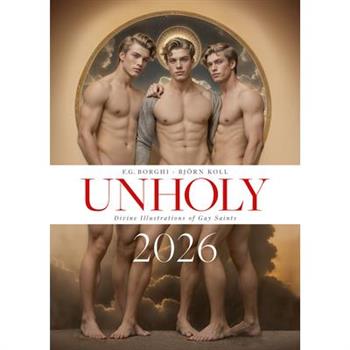

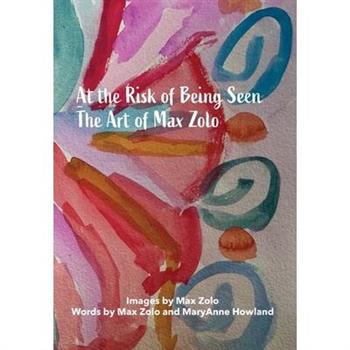

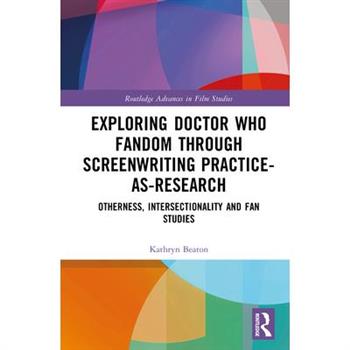
![The Forms of Silence [ street photography ] The Forms of Silence [ street photography ]](https://cdn.kingstone.com.tw/english/images/product/4187/9781967254187m.jpg?Q=a7644)

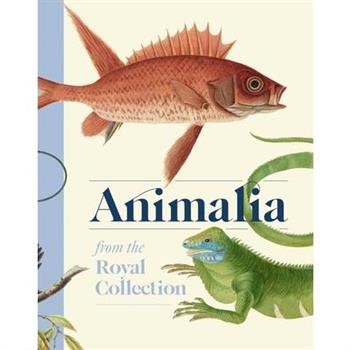




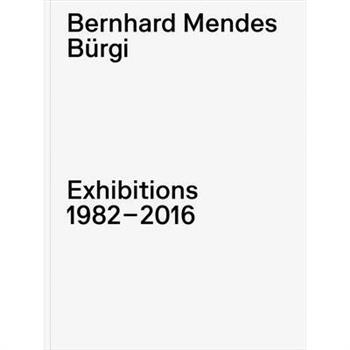
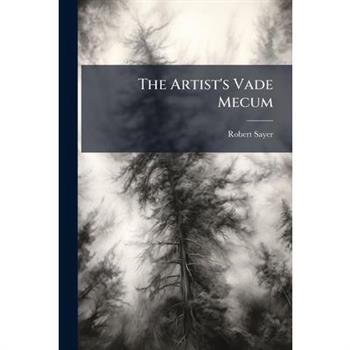
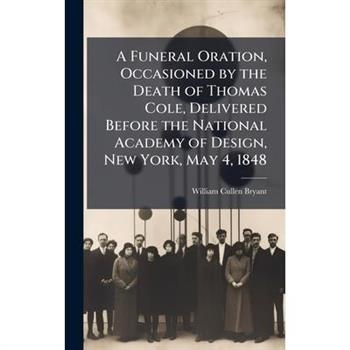
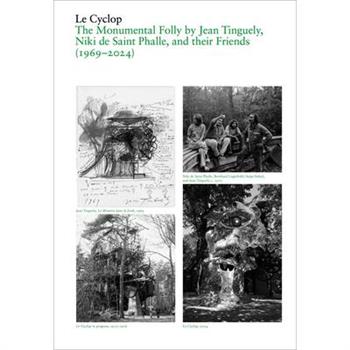


![Ilam Anastatic Drawing Society [Archaeological and Antiquarian Papers, Ed. by G.R. Mackarness and W.F. Francis] Ilam Anastatic Drawing Society [Archaeological and Antiquarian Papers, Ed. by G.R. Mackarness and W.F. Francis]](https://cdn.kingstone.com.tw/english/images/product/2312/9781023992312m.jpg?Q=7c3d5)
